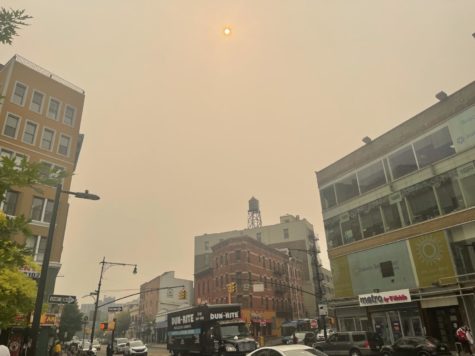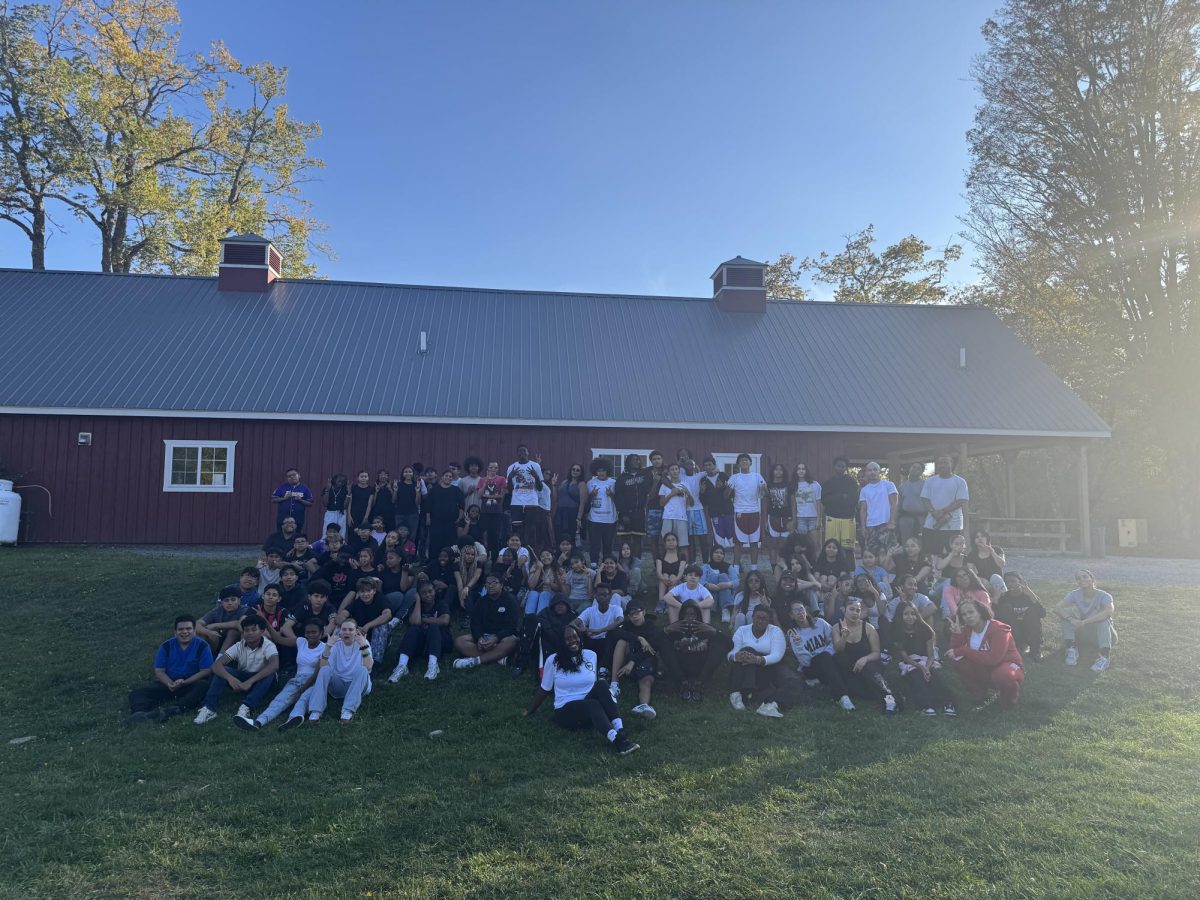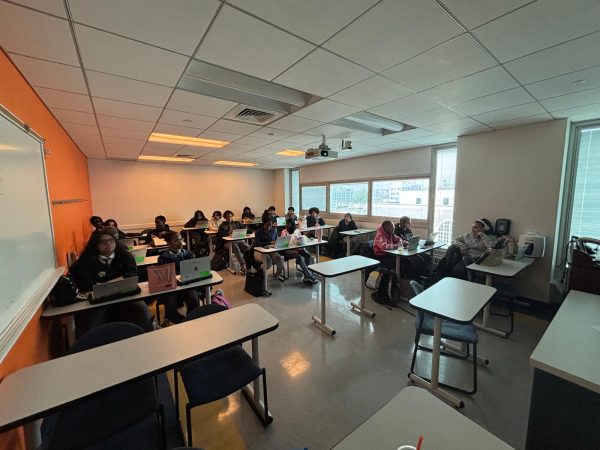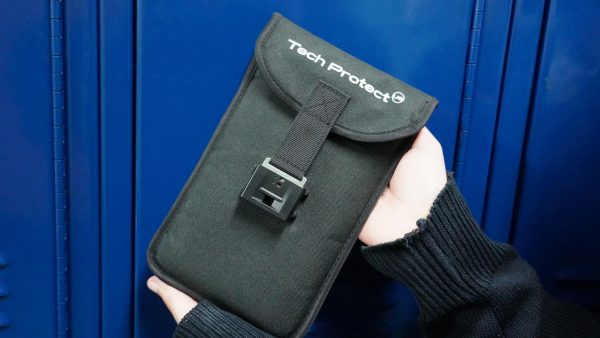Inferno in the South Bronx: Canadian Wildfire
We are now in the midst of a fire.
Last week, the concrete jungle of New York City became a battleground for nature’s wrath as a raging Canadian wildfire swept across the city, turning iconic streets into smoke-filled corridors and threatened the livelihoods of millions. As smoke engulfed neighborhoods, panic ensued, and residents found themselves trapped in an unprecedented fight against an inferno on their own doorstep. This is not just another disaster movie plot – it was a surreal reality that had clouded the Big Apple. The South Bronx, among the numerous cities contending with the consequences of the wildfire, is already predisposed and faced significant challenges in this struggle.
CBS news reported that the Canadian wildfire was caused by the warm and dry conditions from the record heat and drought in Canada due to climate change. In late May, Canada reportedly experienced its hottest day at a record breaking 121 degrees Fahrenheit. This helps determine the culprit of the wildfire.
Due to this, the Wildfire had affected several states across the United States, many for which record breaking air quality index and PM2.5 concentrations. These pollutants were fine particles from dust, automotive emissions, wildfires, and more. These particles are smaller than 2.5 micrometers allowing it to penetrate deeply into the lungs and respiratory system, stated the World health Organization. Inhaling these pollutants has been associated with premature death, particularly in people who have chronic heart or lung diseases, and reduced lung function growth in children, records the California Air Resources Board.
ABC News has casted NYC on the top of the list of the world’s worst air quality rankings due to the dangers of the wildfire. It has left the city with ‘plumes of smoke’ and vulnerable communities to the high PM2.5 concentrations.

Before the fire, the South Bronx community was known for its high PM2.5 concentrations. Their concentrations are a fundamental reason for why the Mott Haven community is named “Asthma Alley.” The New York environmental health portal mentions how the air conditions have resulted in asthma cases and hospitalizations five times the national average and at rates 21 times higher than other NYC neighborhoods. Asthma hospitalizations in the Mott Haven community have an estimated rate of more than 40% compared to neighborhoods around the NYC area.
The Citizen Science crew at the Laboratory School Of Finance & Technology which consist of researchers Briant DeJesus (’24), Kennedy Betances (’24), Jeremy Montes (’24), John De La Cruz (’24), Oscar Flores (’24), Hailey Santiago (’24), Raul Garcia (’24), Teishani Sinclair (’24), Luis Tapia Montiel (‘25), Mx. Kat, Yoshira Van Horne, and Markus Hilpert have continued their studies on the South Bronx air quality. After assembling air quality monitors to retrieve PM2.5 reading and distributing around the environment, data has been collected on a consistent basis. Data shows the major difference between a monitor’s PM2.5 readings in the South Bronx compared to one in downtown Manhattan, therefore the data wasn’t as surprising but what appeared on our data collection sheet on June 6, 2023 was.
After the wildfire, the data showed PM2.5 reading of nearly 100 micrometers per cubic feet. This was an unearthly concentration and affects all groups of our community, most of which already experience the effects of asthma.


Betances, a member of the Citizen Science group, mentions how even before the wildfire, the community was in a vulnerable position referring to the poor air conditions and asthma alley term that the South Bronx is known for. “Having another factor added on top doesn’t feel fair. We are screwed.”
They emphasize how despite the wildfire, construction still takes place. Factories are still running. “Nothing has halted to mediate these wildfire conditions.”
Katerina Wengerter, the leader of the Citizen Science group emphasizes how the severity of the [wildfire] “didn’t hit her until Wednesday” when she embarked on her normal bike to work and was having trouble breathing after a few blocks. She remarks how she has “never experienced an AQI of 300+ that changed the color of the sky and made the air smell like a never-ending BBQ. It felt apocalyptic.”

In hopes of bringing about awareness of air pollution through the conditions of the wildfires, Wengerter mentions how they hope that the wildfire bridges this awareness. “The movement to end environmental racism in the South Bronx community has been long standing. There’s a good chance that, if made aware of this issue now, others in NYC might realize the fortune they have to breathe clean air daily and rally to help the South Bronx,” which has disproportionately higher levels of PM2.5 than many other parts of the five boroughs.
This awareness seems evident already as community members such as students have reportedly tracked the Air Quality Index on a consistent basis and posted these numbers on social media, now the question is: will this monitoring remain?
Wengerter emphasizes how we need to “pull together as a nation and global society to create policy that will help us combat climate change.” This strategy mitigates the impact of severe natural disasters such as wildfires that are “adding stressors onto the already burdened communities.”
William Ohl, a teacher and co-founder of the Laboratory School Of Finance and Technology, adds that “there needs to be a better filtration system,” in order to mediate and mitigate severe events like these.
Highways, vehicles, factories, urbanization, limited green space, and now smog from a significant wildfire rules our community. How will our people continue to respond?
Your donation will support the student journalists of The Laboratory School of Finance and Technology. Your contribution will allow us to purchase equipment and cover our annual website hosting costs.
























